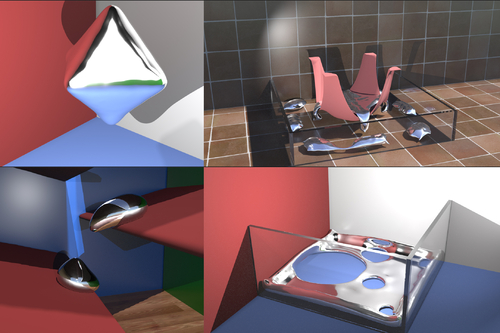Pre-recorded Sessions: From 4 December 2020 | Live Sessions: 10 – 13 December 2020
4 – 13 December 2020
Pre-recorded Sessions: From 4 December 2020 | Live Sessions: 10 – 13 December 2020
4 – 13 December 2020
#SIGGRAPHAsia | #SIGGRAPHAsia2020
#SIGGRAPHAsia | #SIGGRAPHAsia2020











Date: Saturday, December 12th
Time: 10:00am - 10:30am
Venue: Zoom Room 3
Note: All live sessions will be screened on Singapore Time/GMT+8. Convert your time zone here.
Abstract: We present a novel approach to enrich arbitrary rig animations with elastodynamic secondary effects. Unlike previous methods which pit rig displacements and physical forces as adversaries against each other, we advocate that physics should complement artists' intentions... literally. We propose optimizing for elastodynamic displacements in the subspace orthogonal to displacements that can be created by the rig. This ensures that the additional dynamics motions do not undo the rig animation. The complementary space is high-dimensional, algebraically constructed without manual oversight, and capable of rich high-frequency dynamics. Unlike prior tracking methods, we do not require extra painted weights, segmentation into fixed and free regions or tracking clusters. Our method is agnostic to the physical model and can plug into non-linear FEM simulations, geometric as-rigid-as-possible, or mass-spring models. Our method does not require a particular type of rig and will add secondary effects to skeletal animation, cage-based deformation, wire deformers, blendshapes, motion capture data, and rigid-body simulations.
Author(s)/Presenter(s):
Jiayi Eris Zhang, University of Toronto, Canada
Seungbae Bang, University of Toronto, Canada
David I.W. Levin, University of Toronto, Canada
Alec Jacobson, University of Toronto, Canada
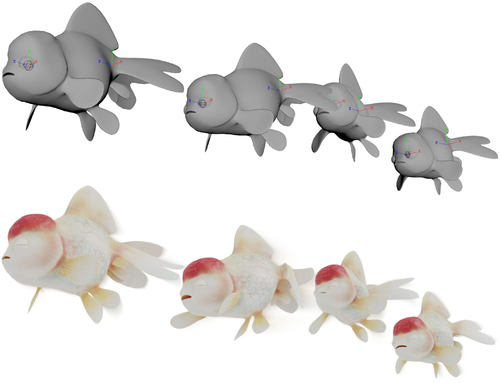
Abstract: We present a novel parallel algorithm for cloth simulation that exploits multiple GPUs for fast computation and the handling of very high resolution meshes. To accelerate implicit integration, we describe new parallel algorithms for sparse matrix-vector multiplication (SpMV) and for dynamic matrix assembly on a multi-GPU workstation. Our algorithms use a novel work queue generation scheme for a fat-tree GPU interconnect topology. Furthermore, we present a novel collision handling scheme that uses spatial hashing for discrete and continuous collision detection along with a non-linear impact zone solver. Our parallel schemes can distribute the computation and storage overhead among multiple GPUs and enable us to perform almost interactive simulation on complex cloth meshes, which can hardly be handled on a single GPU due to memory limitations. We have evaluated the performance with two multi-GPU workstations (with 4 and 8 GPUs, respectively) on cloth meshes with 0.5-1.65M triangles. Our approach can reliably handle the collisions and generate vivid wrinkles and folds at 2-5 fps, which is significantly faster than prior cloth simulation systems. We observe almost linear speedups with respect to the number of GPUs.
Author(s)/Presenter(s):
Cheng Li, Zhejiang University, China
Min Tang, Zhejiang University, China
Ruofeng Tong, Zhejiang University, China
Ming Cai, Zhejiang University, China
Jieyi Zhao, University of Texas Health Science Center at Houston, United States of America
Dinesh Manocha, University of Maryland College Park, United States of America
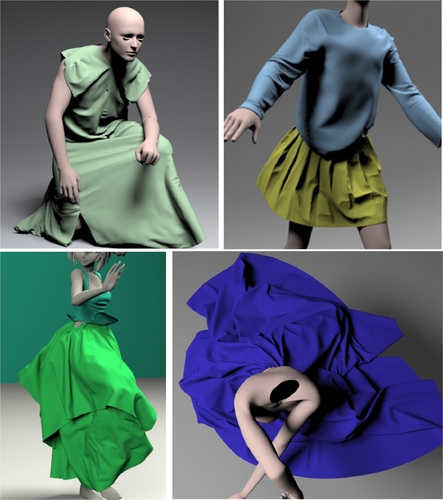
Abstract: As demands for high-fidelity physics-based animations increase, the need for accurate methods for simulating deformable solids grows. While higher-order finite elements are commonplace in engineering due to their superior approximation properties for many problems, they have gained little traction in the computer graphics community. This may partially be explained by the need for finite element meshes to approximate the highly complex geometry of models used in graphics applications. Due to the additional per-element computational expense of higher-order elements, larger elements are needed, and the error incurred due to the geometry mismatch eradicates the benefits of higher-order discretizations. One solution to this problem is the embedding of the geometry into a coarser finite element mesh. However, to date there is no adequate, practical computational framework that permits the accurate embedding into higher-order elements. We develop a novel, robust quadrature generation method that generates theoretically guaranteed high-quality sub-cell integration rules of arbitrary polynomial accuracy. The number of quadrature points generated is bounded only by the desired degree of the polynomial, independent of the embedded geometry. Additionally, we build on recent work in the Finite Cell Method (FCM) community so as to tackle the severe ill-conditioning caused by partially filled elements by adapting an Additive-Schwarz-based preconditioner so that it is suitable for use with state-of-the-art non-linear material models from the graphics literature. Together these two contributions constitute a general-purpose framework for embedded simulation with higher-order finite elements. We finally demonstrate the benefits of our framework in several scenarios, in which second-order hexahedra and tetrahedra clearly outperform their first-order counterparts.
Author(s)/Presenter(s):
Andreas Longva, RWTH Aachen University, Germany
Fabian Löschner, RWTH Aachen University, Germany
Tassilo Kugelstadt, RWTH Aachen University, Germany
José Antonio Fernández-Fernández, RWTH Aachen University, Germany
Jan Bender, RWTH Aachen University, Germany
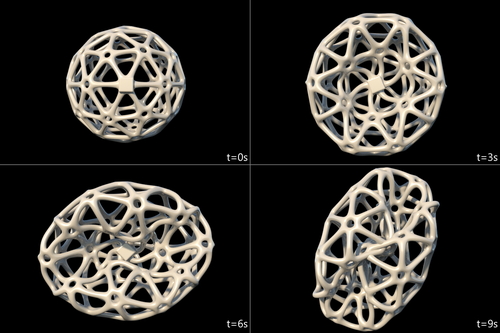
Abstract: We propose Monolith, a monolithic pressure-viscosity-contact solver for more accurately, robustly, and efficiently simulating non-trivial two-way interactions of rigid bodies with inviscid, viscous, or non-Newtonian liquids. Our solver simultaneously handles incompressibility and (optionally) implicit viscosity integration for liquids, contact resolution for rigid bodies, and mutual interactions between liquids and rigid bodies by carefully formulating these as a single unified minimization problem. This monolithic approach reduces or eliminates an array of problematic artifacts, including liquid volume loss, solid interpenetrations, simulation instabilities, artificial "melting" of viscous liquid, and incorrect slip at liquid-solid interfaces. In the absence of solid-solid friction, our minimization problem is a Quadratic Program (QP) with a symmetric positive definite (SPD) matrix and can be treated with a single Linear Complementarity Problem (LCP) solve. When friction is present, we decouple the unified minimization problem into two subproblems so that it can be effectively handled via staggered projections with alternating LCP solves.We also propose a complementary approach for non-Newtonian fluids which can be seamlessly integrated and addressed during the staggered projections. We demonstrate the critical importance of a contact-aware, unified treatment of fluid-solid coupling and the effectiveness of our proposed Monolith solver in a wide range of practical scenarios.
Author(s)/Presenter(s):
Tetsuya Takahashi, Adobe Inc., United States of America
Christopher Batty, University of Waterloo, Canada
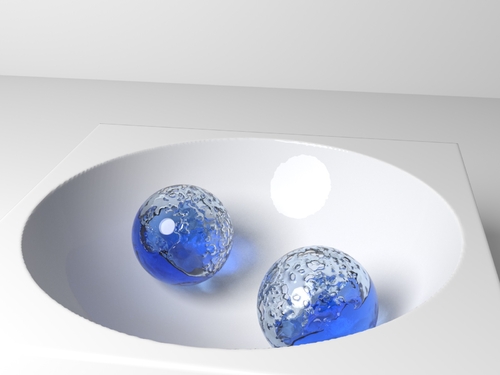
Abstract: We present an updated Lagrangian discretization of surface tension forces for the simulation of liquids with moderate to extreme surface tension effects. The potential energy associated with surface tension is proportional to the surface area of the liquid. We design discrete forces as gradients of this energy with respect to the motion of the fluid over a time step. We show that this naturally allows for inversion of the Hessian of the potential energy required with the use of Newton’s method to solve the systems of nonlinear equations associated with implicit time stepping. The rotational invariance of the surface tension energy makes it non-convex and we define a definiteness fix procedure as in [Teran et al. 2005]. We design a novel level-set-based boundary quadrature technique to discretize the surface area calculation in our energy based formulation. Our approach works most naturally with Particle-In-Cell [Harlow 1964] techniques and we demonstrate our approach with a weakly incompressible model for liquid discretized with the Material Point Method [Sulsky et al. 1994]. We show that our approach is essential for allowing efficient implicit numerical integration in the limit of high surface tension materials like liquid metals.
Author(s)/Presenter(s):
David A. B. Hyde, University of California Los Angeles, United States of America
Steven W. Gagniere, University of California Los Angeles, United States of America
Alan Marquez-Razon, University of California Los Angeles, United States of America
Joseph Teran, University of California Los Angeles, United States of America
